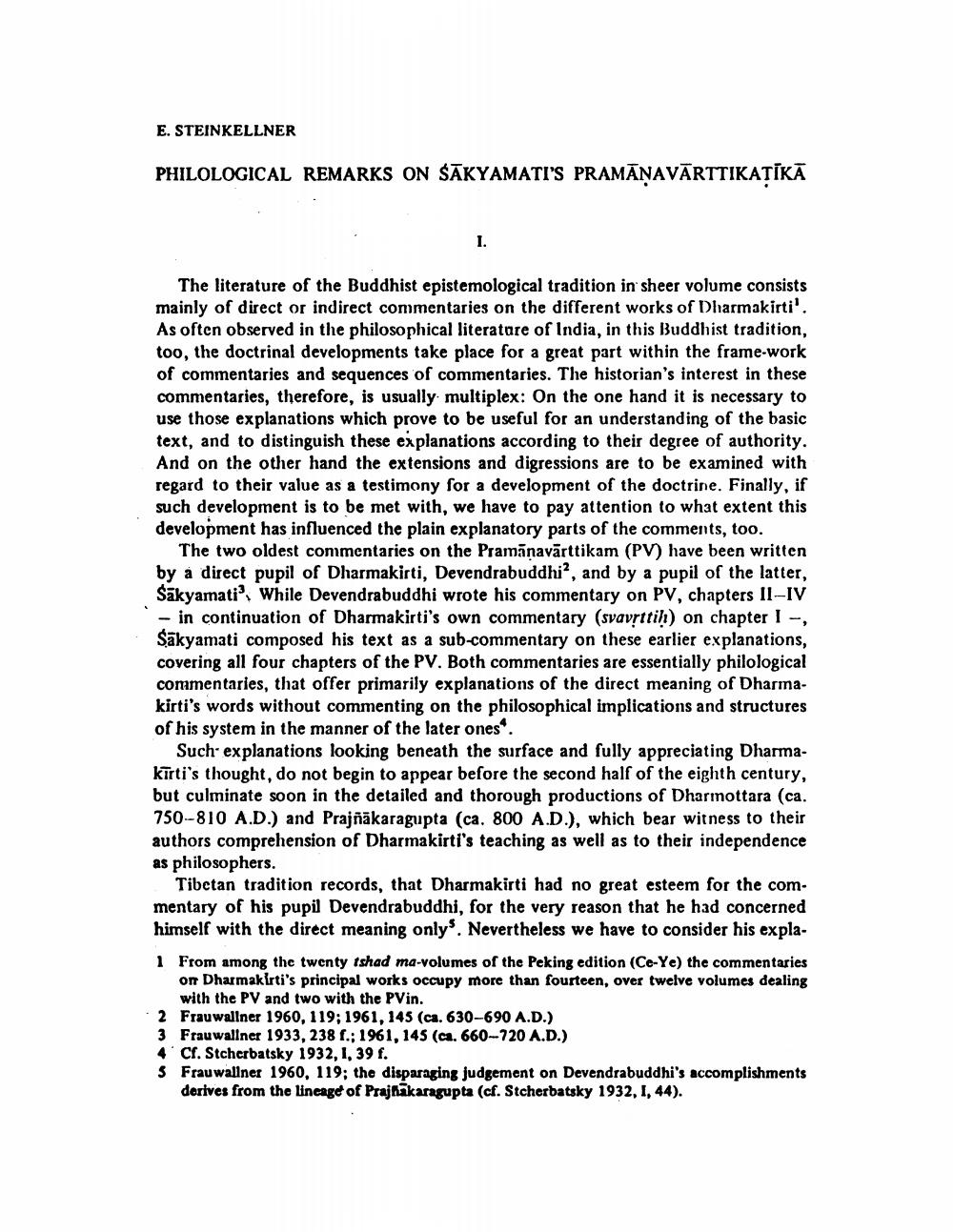Book Title: Philological Remarks On Sakyamatis Pramanavarttikatika Author(s): Ernst Steinkellner Publisher: Ernst Steinkellner View full book textPage 1
________________ E. STEINKELLNER PHILOLOGICAL REMARKS ON SĀKYAMATI'S PRAMĀŅAVĀRTTIKATĪKĀ The literature of the Buddhist epistemological tradition in sheer volume consists mainly of direct or indirect commentaries on the different works of Dharmakirti'. As often observed in the philosophical literatare of India, in this Buddhist tradition, too, the doctrinal developments take place for a great part within the framework of commentaries and sequences of commentaries. The historian's interest in these commentaries, therefore, is usually multiplex: On the one hand it is necessary to use those explanations which prove to be useful for an understanding of the basic text, and to distinguish these explanations according to their degree of authority. And on the other hand the extensions and digressions are to be examined with regard to their value as a testimony for a development of the doctrine. Finally, if such development is to be met with, we have to pay attention to what extent this development has influenced the plain explanatory parts of the comments, too. The two oldest commentaries on the Pramānavārttikam (PV) have been written by a direct pupil of Dharmakirti, Devendrabuddhi?, and by a pupil of the latter, Sakyamati". While Devendrabuddhi wrote his commentary on PV, chapters II-IV - in continuation of Dharmakirti's own commentary (svavrttih) on chapter I-, Sākyamati composed his text as a sub-commentary on these earlier explanations, covering all four chapters of the PV. Both commentaries are essentially philological commentaries, that offer primarily explanations of the direct meaning of Dharmakirti's words without commenting on the philosophical implications and structures of his system in the manner of the later ones. Such- explanations looking beneath the surface and fully appreciating Dharmakīrti's thought, do not begin to appear before the second half of the eighth century, but culminate soon in the detailed and thorough productions of Dharinottara (ca. 750-810 A.D.) and Prajñākaragupta (ca. 800 A.D.), which bear witness to their authors comprehension of Dharmakirti's teaching as well as to their independence as philosophers. Tibetan tradition records, that Dharmakirti had no great esteem for the commentary of his pupil Devendrabuddhi, for the very reason that he had concerned himself with the direct meaning only. Nevertheless we have to consider his expla1 From among the twenty tshad ma-volumes of the Peking edition (Ce-Ye) the commentaries on Dharmakirti's principal works occupy more than fourteen, over twelve volumes dealing with the PV and two with the PVin. 2 Frau wallner 1960, 119; 1961, 145 (ca. 630-690 A.D.) 3 Frau wallner 1933, 238 f.; 1961, 145 (ca. 660-720 A.D.) 4 Cf. Stcherbatsky 1932, 1, 39 f. 5 Frau wallner 1960, 119; the disparaging judgement on Devendrabuddhi's accomplishments derives from the lineage of Prajhākaragupta (cf. Stcherbatsky 1932, 1, 44).Page Navigation
1 2 3 4 5 6 7 8 9 10 11 12 13
